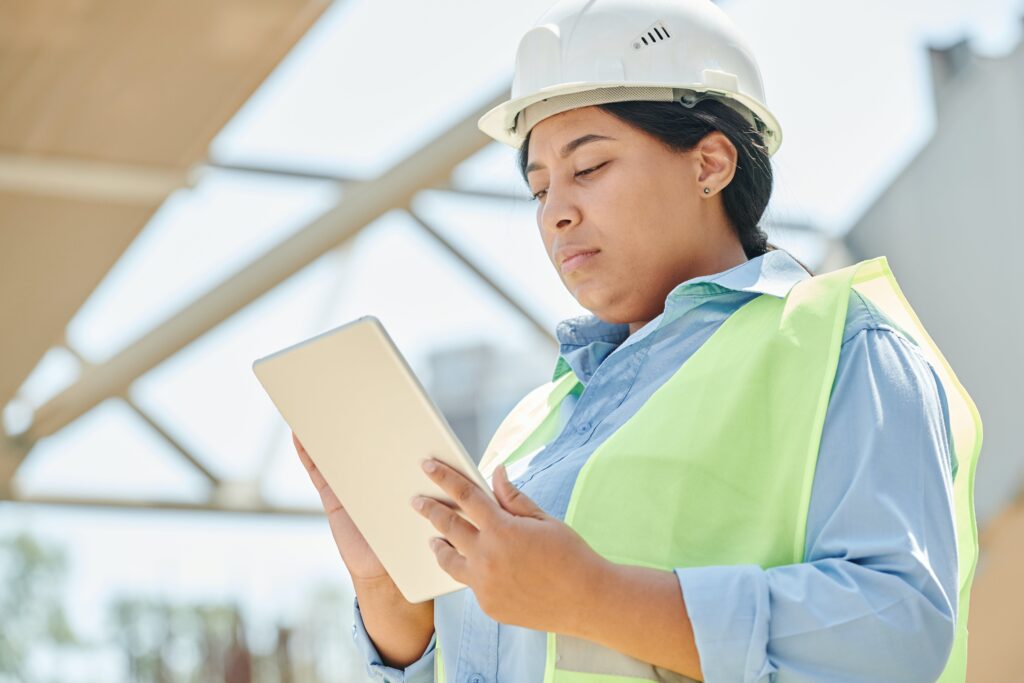Using underfloor heating and cooling in your projects means being able to manage consumption as well. These systems can deliver energy savings of up to 20%1 without compromising on comfort.
What is the key to optimising underfloor heating? Connectivity. The types of connectivity you can add to your buildings fall into two categories:
- comfort control, operated within the space being heated;
- boiler room connectivity that ensures proper network operation, stability and sustainability.
Note: The solutions discussed below work with all types of heat sources (heat pumps, boilers, etc.) and are compatible with any type of emitter. They are suitable for both renovation and new installations.
Comfort and consumption management: connected heating and cooling solutions in professional living spaces
Using a thermostat
Thermostats allow you to manage your consumption more accurately and use only the energy you need.
There are two different options of connected systems available:
- wired/wireless and local thermostat = controlled via a local program
- wireless thermostat = controlled remotely via an app and a gateway
If you use a wireless thermostat, you can control the temperature remotely.
| Using a thermostat in a company office |
An office has a connected thermostat that users control via an app. They can control the output from the transmitter through one or more thermostats to achieve maximum comfort and energy savings. This solution works with both radiators and underfloor heating. |
Smart Thermostats
Smart thermostats, such as Comap Smart Home (CSH), offer the ultimate in efficiency. They are equipped with a range of intelligent features that allow users to heat and cool their space according to their habits and type of building.
Smart thermostats measure the air temperature and switch the heating on or off as required.
They also take into account:
- the time it takes to heat up and cool down the space;
- the outside temperature;
- the weather forecast.
Cooling control
Connected thermostats also allow users to control the cooling function of underfloor cooling and heating systems, remotely or locally.
The case of sensitive buildings
Maintaining a consistent temperature is critical in certain buildings, such as hospitals, nurseries and data centres, where fluctuations in heating or cooling can have serious consequences. In a hospital, for example, temperature consistency is essential for patient comfort and recovery, while in data centres, it is necessary to prevent equipment from overheating.
The more sensitive the premises, the greater the need for connectivity to ensure the right temperature, since it allows you to:
- carry out preventative maintenance: get feedback, monitor the temperature, anticipate changing parts, etc.
- react quickly and remotely: carry out a diagnosis, track problems, etc.
Connectivity allows information to be reported and problems to be anticipated and avoided.
Safety and sustainability: connectivity in boiler rooms
Preventative maintenance
Connectivity in boiler rooms allows for remote system monitoring, preventative maintenance and diagnosis of problems, guaranteeing correct operation, stability and network durability.
It also helps manage various safety measures, such as:
- maintaining the right pressure
- maintaining the right water level
- avoiding the presence of air
| Examples of use |
| Connected solutions are highly recommended for sensitive buildings with a central boiler room, such as hospitals, care homes and data centres. In hospitals and care homes, sudden temperature changes can be harmful to patients, so having a tool to maintain a stable temperature is imperative. |
Maintaining pressure
One of the most important aspects to keep under control is boiler pressure.
| Pressure in boiler systems |
| Boilers will not function if the right water pressure isn’t maintained. A connected heating solution automatically controls the installation. |
Connected solutions particularly manage the water level, which isn’t systematic but is essential, either by adding water or ordering more to avoid drops.
Air management
Removing air in the water that is set to enter the system is essential. A connected boiler room allows for interactive pressure maintenance, water level management and air management functions. This means that whenever the system orders additional water to maintain the right pressure in the water pipes, the vacuum degasser automatically activates to treat it.
Transmitter control
Among the various existing energy control systems for underfloor heating, Secos is the most cost-effective and efficient option. A connected manifold regulates the heated floor with dynamic balancing, using system data for automatic hydraulic balancing. This system allows you to increase energy savings and ensure maximum energy efficiency, especially in multi-unit buildings.
Unlike pressure machines, this is not a safety issue, but it provides valuable information (e.g. energy used and consumption).
Connectivity adds valuable functions to your heating systems. Simply put, it helps you gather information and carry out preventative maintenance. Thermostat solutions are recommended for residential or tertiary applications, while boiler room solutions paired with a thermostat are more suitable for larger areas. Both of these connected solutions are suitable for both renovation and new build projects.
1 Source: HYSOPT, Analysis of the effects on energy, operating costs and carbon of an autonomous thermostat, 2022





